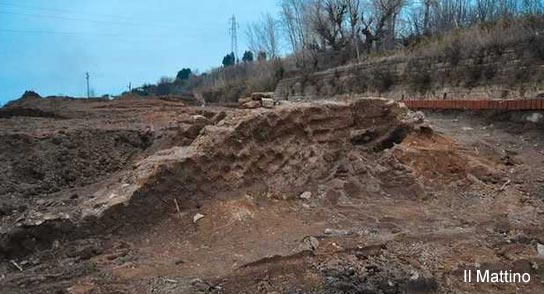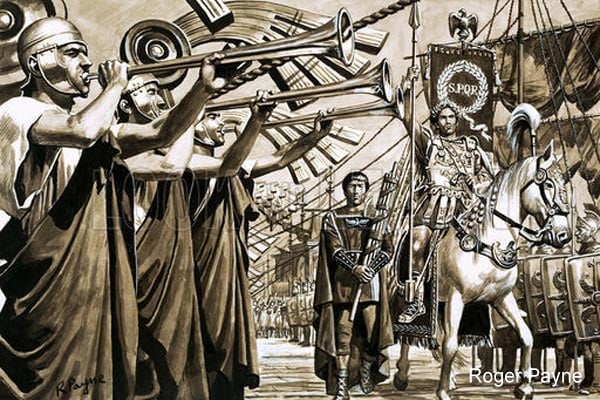Floods expose Roman ruins near famous Gulf of Baiae crossing
Heavy flooding south of Naples has caused a series of landslips,exposing old Roman walls at Baiae (now known as Baia), an ancient Roman seaside resort on the Bay of Naples in Italy, much of which is nowsubmerged underwater. The walls trace back to a villa dating to the 1st or 2nd century AD and reveals more of the once rich and lavish city in which the ‘great and the good’, such as Julius Caesar and Nero, built magnificent villas.

Roman wall discovered following a series of landslips
(Image Credit:Il Mattino)
Baiae was an integral part Portus Julius, home port of the Western Imperial Fleet of ancient Rome, and towards the end of the Roman Republic it was a fashionable resort, popular with the super-rich, and notorious for the ‘hedonistic temptations’ on offer, and for rumours of scandal and corruption.

Remnants of the ancient city, now underwater
(Image credit:The Underwater Archaeology Park of Baiae)
The ancient port is also well-known for its ‘Emperor of Excess’, Caligula (also known as Gaius), who ruled the Roman Empire from 37 to 41 AD. Caligula is famous for a spectacular stunt in which he rode across the Gulf of Baiae on a three-mile pontoon bridge in defiance of an astrologer’s prediction that he had "no more chance of becoming emperor than of riding a horse across the Gulf of Baiae". The incredible performance carried out by this decadent emperor has been described inThe Emperors of Excess (The Express):
It stretched three miles across the deep blue waters of the Bay of Naples at ancient Rome’s most fashionable seaside resort of Baiae.
But Caligula’s was no ordinary bridge. It was a temporary, floating structure built on wooden pontoons, a costly and impressive feat of engineering. It served a single purpose before being dismantled.
On a day of boiling heat watched by crowds of spectators, Caligula rode across the bridge. His armour glinted in the sunlight, for the 24-year-old emperor had dressed himself in the golden breastplate of the legendary Greek hero Alexander The Great.
On the following day Caligula made the journey in reverse, this time riding in a chariot, followed by soldiers of his personal guard.
Baiae was devastated by Muslim raiders in the 8th century ad and was entirely deserted because of malaria in 1500. Because of coastal subsidence most of Baiae is now under water in the Bay of Naples, largely due to local volcanic activity. Exquisite statues and rich mosaics are magnets for divers.
Featured Image: Caligula rode dryshod across the Bay of Naples on a bridge made up of many ships which were boarded over to facilitate this defiant feat, by Roger Payne

















